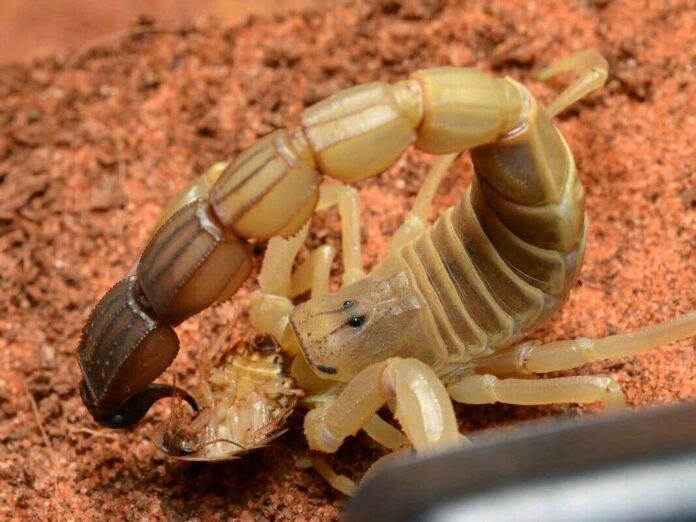Scorpions are neither friendly nor cuddly animals that we should interact with. Let alone knowing that there are venomous scorpions out there whose venom is capable of killing a human. Actually, all scorpions have a venomous sting but a majority of them do not pose a serious threat to humans. Among all scorpion species, only about 25 of them are known to have deadly venom that could kill a human. We are talking about the 8 most venomous scorpions among those 25 species today. Remember their faces and where they live so that you won’t have trouble messing with them when you see one.
1Arabian Fat-Tailed Scorpion
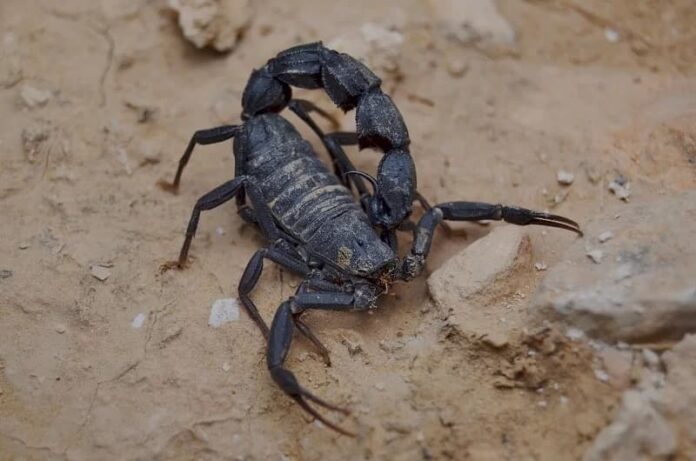
Habitat: North Africa, Middle East
With that fierce look, that is already the first sign that obviously tells you to stay away from it. As they are one of the most dangerous and venomous scorpions, Arabian Fat-Tailed Scorpions can cause some serious damage. A sting from these lethal scorpions can bring the victims some ugly symptoms that include seizures, unconsciousness, and hypertension. Without medical attention right away, the victims will face a likelihood of death within 7 hours after the sting. Healthy adults will handle the pain just fine albeit excruciating, but children and people with heart problems are not so lucky. These venomous scorpions usually live in the ruins of old neglected structures, at least you know where to avoid them now.
2Black Spitting Thick-Tailed Scorpion
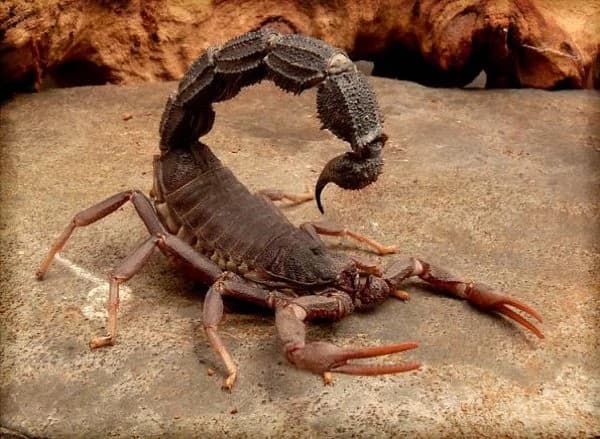
Habitat: South Africa
Goes by deadly names such as Giant Deathstalker, Dark Scorpion, or Transvaal Thick-Tailed Scorpion, this scorpion is one dangerous species. Dark brown or black in color with thin pincers and thick tails, it is not difficult to recognize them. The unique part about them is that they can both sting and spray their kurtoxin venom; as if stinging is not painful enough. With the reputation of being the most dangerous scorpions in South Africa, their venom is as lethal as cyanide. Plus with the combination of its size and ability to deliver a large dose of venom, this scorpion is bad news.
Bonus: This scorpion can spit its venom up to one meter which can cause temporary blindness or possible permanent damage. Try to get close to inspect a scorpion, you might be the next victim.
3Brazilian Yellow Scorpion
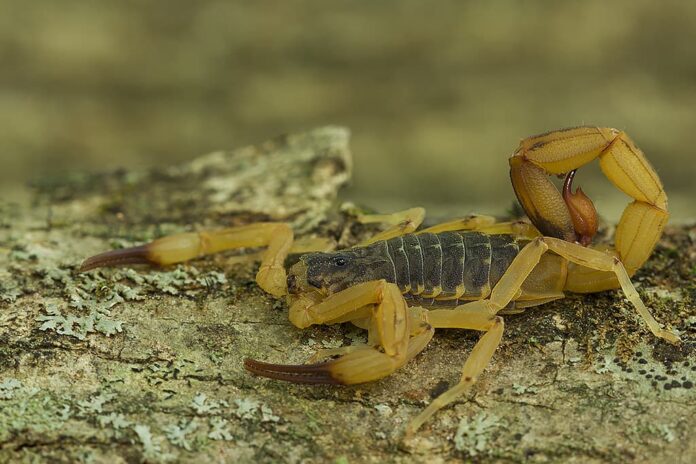
Habitat: Brazil
It is obvious that this species of scorpion is from Brazil, it is right there in its name. In Brazil, it is considered to be the most dangerous scorpion because of its extremely toxic venom. As a matter of fact, they are also the most dangerous scorpions in North America as well. Their contact with humans is way too common they sting thousands of people each year. Their painful sting can lead to symptoms such as nausea and a rapid heartbeat.
Along with that, there are some cardiac effects, hyperglycemia, fever, priapism, agitation, abdominal pain, vomiting, and hypersalivation. Things will get serious in some cases which include prominent cardiovascular, pulmonary, gastrointestinal, and metabolic complications often appear. Generally, most stings can result in stomach cramps and difficulty in breathing, and the elderly and children have a high risk of death.
4Deathstalker Scorpion
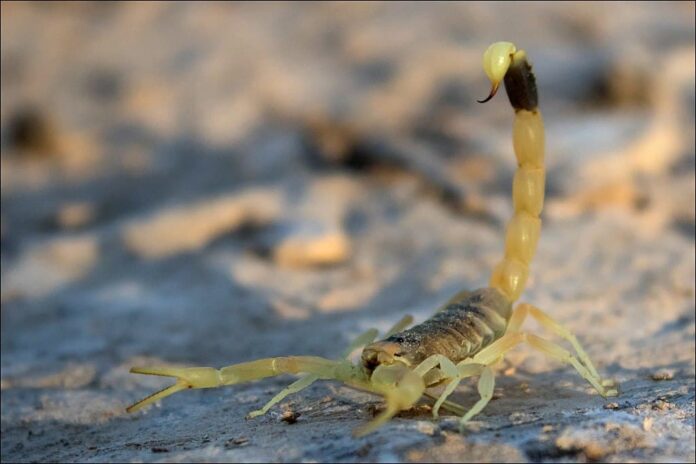
Habitat: North Africa, Middle East, Central Asia, Asia Minor, Arabian Peninsula
Based on their habitat, these venomous scorpions are pretty much everywhere; and that is bad news. By the name, you should already be able to tell that they are the scorpions to avoid. The range of these scorpions covers a wide territory in many deserts such as Sahara, Arabian, and Thar. Being one of the most dangerous scorpions in the world, the Deathstalker has highly toxic venom. That is why my friends, you should always check your boots before wearing them when you’re in the desert.
Despite the fact that most grown men stung by a deathstalker live to tell the tale, the pain was never pleasant. The symptoms of a deathstalker’s sting include an increased heartbeat, high blood pressure, or even convulsions and coma. Grownups might be tough enough to handle the pain, but things are unfortunate for children and some unhealthy adults. At the same time, they are very aggressive although they are small in size so don’t underestimate their ability to maim you.
5Indian Red Scorpion
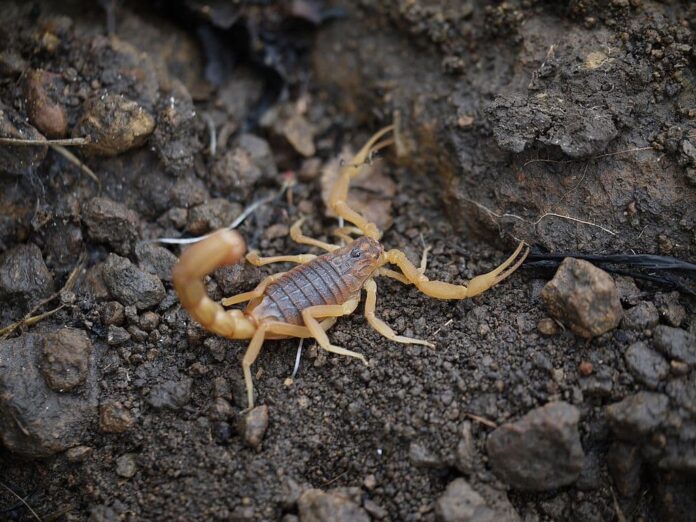
Habitat: India, Eastern Pakistan, Eastern Nepal, Sri Lanka
Bright colors are nature’s way of warning that the animals are dangerous and you should stay away from them. Things go the same with this adorable scorpion right here with coloration ranging from dark orange to brightly red-brown. The Indian Red Scorpion has been said to be the most lethal in the world, and its venom is serious. Well if look at that thick tail, you sure can tell that the venom is packed in there. Not to mention this scorpion has killed many people already, so you should be careful when you see one.
When stung, the victims typically experience nausea, heart problems, discoloration of the skin, and pulmonary edema (accumulation of fluid in lungs). Pulmonary edema is a serious case, and it causes shortness of breath which could lead to death. This usually occurs within 24 hours of the sting, and hospitalization is needed immediately. You can usually find them across vegetated lowlands with subtropical to tropical and humid climates. Sometimes, their encounters with humans mainly occur during the night or early morning when they crawl into beds or fall from ceilings.
6Gadim Scorpion
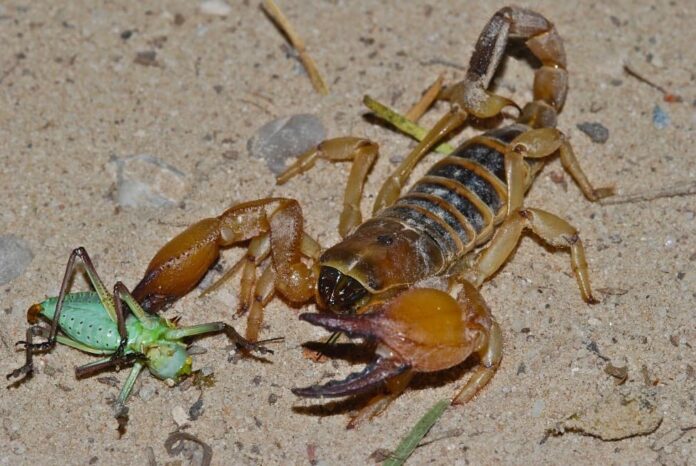
Habitat: Iran
Mostly prefer hot and humid habitats, Gadim scorpion is the species with highly cytotoxic venom. The venom from these scorpions can cause serious wounds and inflammations along with necrosis and blisters. The worse and most painful part is that those wounds are slow and difficult to heal. Even worst, there is no antivenom available for this scorpion yet. That is why this scorpion is responsible for up to 67% of scorpion-related deaths in Iran.
The unique yet terrifying thing about this scorpion is that its sting is painless yet very deadly. For the first 24 to 72 hours, there is no pain at all. That provides the venom enough time to silently move around and damage the body. I have already mentioned that the venom of this particular scorpion contains cytotoxins. That means it mainly affects the skin and kidney cells which can lead to acute renal failure. Researchers are still conducting studies on Gadim Scorpions, hopefully, there will be an antivenom soon.
7Gormar Scorpion
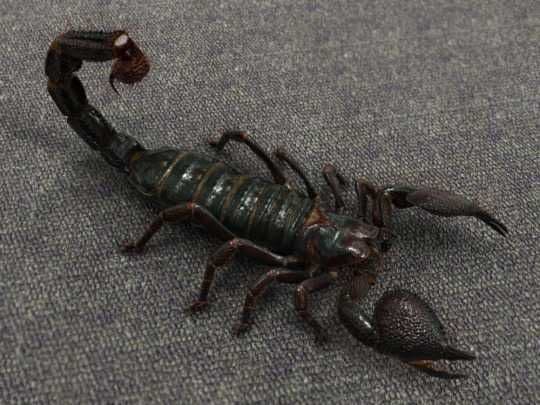
Habitat: Venezuela
With solid black color all over, Gormar scorpion already looks very intimidating; and you haven’t known what they can do yet. This arthropod you are looking at right here is capable of killing a human in a matter of 10 minutes. All they need is a single sting to put you underground, and there is no antivenom for their venom yet. These venomous scorpions usually roam in tropical rainforests and jungle climates and environments, especially in Venezuela. If you happen to be an adventurous explorer, always be extra careful when you see a solid black scorpion like this one.
8Yellow Fat-Tailed Scorpion
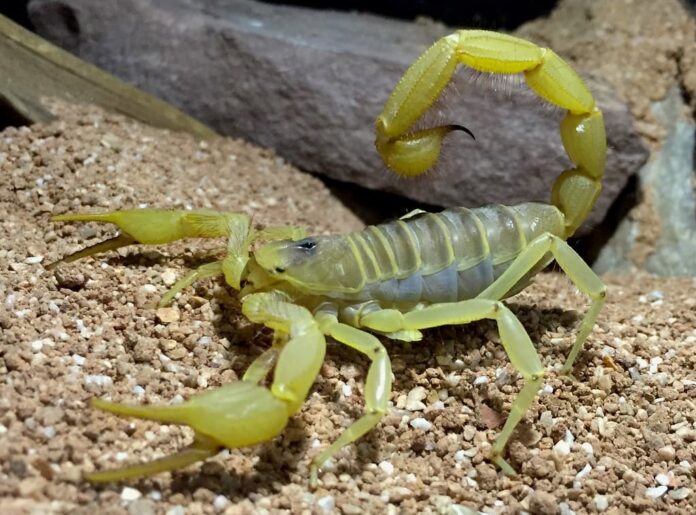
Habitat: North & West Africa, Middle East
Although they are among the most venomous scorpions, there are very few sources talking about yellow fat-tailed scorpions. First things first, their Latin name is Androctonus which means man-killer, and that is exactly what they are capable of doing. This genus is one of the most dangerous scorpion species in the world, and their venom is also very lethal. Plus, their length can be as long as 10 centimeters y’all, and that is big for something with a deadly stinger. You can find them throughout the semi-arid and arid regions, and they have caused several deaths each year.
Related Post: Most Dangerous Turtles To Avoid

